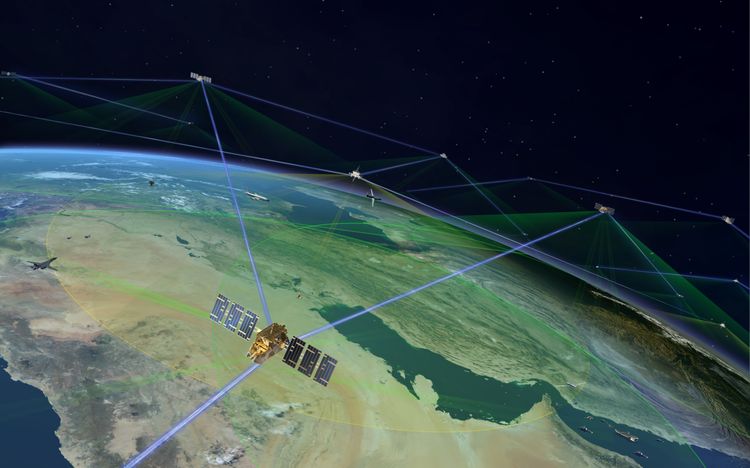SDA exploring new waveforms for future tranches of data transport satellites

COLORADO SPRINGS, Colo. — As the Space Development Agency begins planning for its third operational batch of data transport satellites, it wants to expand the types of waveforms it uses to provide tactical satellite communications to warfighters, according to the organization’s director.
SDA is currently developing a satellite constellation known as the Proliferated Warfighter Space Architecture (PWSA) that will be launched in batches known as tranches. With hundreds of satellites stationed in low-Earth orbit, the architecture aims to incrementally provide critical capabilities for the armed forces, such as satcom, missile warning and missile tracking.
A significant effort for early tranches of the data transport layer focused on offering and proliferating the Link 16 tactical data link from space-based systems. Moving forward, SDA Director Derek Tournear said the agency is considering what other waveforms it wants to equip on Tranche 3.
“Transport is shifting from Link 16 … What we have with 126 Link 16 satellites in Tranche 1 and the 100 Link 16 satellites in Tranche 2 — we’ll have very good coverage for the Link 16 mission,” Tournear told reporters Wednesday during a media roundtable at the annual Space Symposium in Colorado Springs, Colorado. “The next big debate going on for transport is: what are the next tactical data links that we’re going to proliferate in Tranche 3?”
Link 16 is the only common tactical data link used across the United States’ military branches and the NATO alliance. SDA equipped its demonstration tranche of PWSA satellites with some Link 16 payloads and began demonstrating the first-ever space-to-ground transmissions of the data link in November 2023.
And while Tranche 3 is likely to include some Link 16 payloads to ensure overall resiliency of the capability, Tournear said a majority of the satellites will offer tactical satcom within the S-band — although which specific waveforms those could be are still up for debate.
The Beta variant of the Tranche 2 transport layer focused on providing tactical satcom via the S-band and Ultra High Frequency band down to very specific platforms, Tournear noted.
“What we do on Tranche 3 is being informed by what radios those platforms are actually planning on flying in that time frame,” he said. “Will it be a carbon copy of what they’re flying now that’s talking to the UHF S-band on our Tranche 2 Beta birds or will it be a different S-band wave form?”
As for the missile warning and tracking layer, Tournear said Tranche 3 will work toward getting the number of satellites necessary to detect and track high-speed missiles from space.
Across Tranche 1 and Tranche 2, SDA has contracted vendors for 82 satellites in its tracking layer. While the baseline plan for Tranche 3 has been around 54 satellites, the exact number of payloads will be determined as the department decides how much money to allocate to the program over the next couple of months.
A force design conducted by the Space Warfighting Analysis Center found that the Space Force would need around 135 tracking satellites in LEO for its missile warning and tracking mission, Tournear noted.
Right now, the agency is focused on getting to at least 100 tracking satellites in orbit to achieve the resiliency it needs, he added. The difference between that number and the overall goal of 135 is “assumptions in specific designs,” he said.
“It’s going to be continuing to build out off of Tranche 2 tracking and get towards that number of 100 satellites in the total LEO tracking constellation, adding in more of those missile defense satellites as we go to make sure that we have enough coverage for the missile defense mission by the 2030 time frame,” Tournear said.






